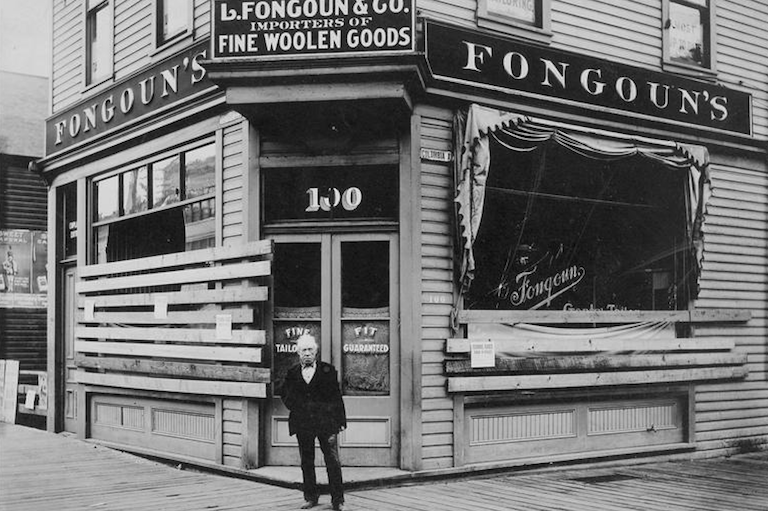Historical Perspectives: Japanese Internment
Grade Levels: 9/10, 11/12
Subject Area: Social Studies, History, Geography, ELA, Civics
Lesson Overview
In this lesson students are introduced to the historical thinking concept of Historical Perspectives through an examination of the internment of Japanese-Canadians during the Second World War. Students view the NFB film, Minoru: a Memory of Exile and create a bio-poem reflecting the historical perspective of one of the people in the documentary/memoir.
Time Required
2-3 lessons (75 minute periods)
Historical Thinking Concept(s)
This lesson plan uses the following historical thinking concepts: Use primary source evidence and take historical perspectives.
Learning Outcomes
Student will:
- Compare and contrast present-day worldviews and those of the past
- Examine and compare the perspectives of Japanese-Canadians on internment
- Model historical perspective-taking by avoiding presentism
- Demonstrate an understanding of historical perspectives by writing a poem from the point of view of a historical actor (Minoru or his father)
Background Information
During the Second World War, Canada declared war with Japan on December 8, 1941, after the Japanese attacked Pearl Harbor, Hawaii. There were many Japanese-Canadians living on the British Columbia coast, most of whom were fishers and many of whom were second-generation Canadians. Many British Columbia residents were afraid that the Japanese-Canadians were spies, and coupled with longtime racism and resentment, they lobbied the federal government to deport or intern Japanese-Canadians for the duration of the war. Prime Minister Mackenzie King issued the order, and Japanese-Canadians had their assets and properties seized and auctioned to pay for the internment. Families were often separated and they were sent to camps in the BC interior. At the end of the war, internees were given the choice of moving east to Ontario or Manitoba, or deportation to Japan. Some Canadians who were deported to Japan, were recruited in 1950 by the Canadian military to serve in the Korean war, and their citizenship was reinstated. In 1988, the federal government apologized for the camps and paid individuals compensation, and established educational and community funds.
This lesson can be used on its own, or as part of a course introductory overview of the historical thinking concepts through selected 20th century events in Canadian history.
The Lesson Activity
Activating:
- Introducing Historical Perspectives
- Ask: If you asked a Canadian in 1913 (or some other date in the past) what they think makes a great country, would their answer be the same as your answer today?
- Show the Historical Thinking Project Poster: Historical Perspectives. Ask: Are these women dressed appropriately? Why or why not? Have students discuss the question in small groups, then share their responses with the class. The purpose of this discussion is for students to uncover the worldviews of the people of the past, and to compare them to today. Students often make insightful connections between corsets and plastic surgery, and other ideas about fashion and social status today.
- Introducing Internment
- Tell students that in 1942, the Canadian government forcibly relocated all Japanese-Canadians to internment camps in the BC interior. Ask: Why do you think they would do this?
- Small groups discuss this question and try to predict some ways that Canada was different in 1942 from today. Ask some groups to share their predictions, all students should write in their journals.
Acquiring:
- Watch the NFB documentary, Minoru: A Memory of Exile. Tell students to think about the perspectives shown in the film, and to think about how they might be different from today.
- Hand out the Bio-Poem template and ask students for homework, or in small groups, to complete the Bio-Poem as if they are Minoru or his father. For students who need literacy support, you can limit the number of lines they must complete – e.g. 10 lines only.
- You will likely need to watch the film again, with groups looking for primary source evidence from the film to include in the poem to support the perspective presented.
- Ask each group to put their collective best lines on a chart paper and hang in the classroom.
- Introduce the peer assessment rubric for historical perspectives. Give each student 2 sticky notes in two different colours. Have students put one colour of sticky notes on the best example of historical perspective-taking, and put a code explaining which aspect it demonstrates (worldview, or context). The other colour of sticky note is for constructive criticism on a line that does not demonstrate a consistent worldview, context or is an example of presentism. Lead a class discussion to propose alternate wording to improve those lines, and to have students explain why a particular line is effective. Leave this work posted in the classroom for students to reference as they write their own bio-poems.
Applying:
- Students write their own bio-poem from the historical perspective of their choice. Use the peer evaluation checklists to ensure quality.
- Journal reflection: Students respond to the following prompts in their journals:
- My/our best line from my/our bio-poem and why.
- One question I have about Japanese Internment
- Reflect on your/our initial predictions – what was incorrect and why? What presentist assumptions underlie some of our predictions?
Materials/Resources
Historical Perspectives: Examining Japanese Internment – lesson slides and resources
- Historical Thinking Poster: Historical perspectives
- Bio-Poem handout – from The Big Six
- Minoru, A Memory of Exile (NFB, 1992)
- Peer evaluation checklists
References
The Historical Thinking Project – Historical Perspectives Template
The Big Six Historical Thinking Concepts (Nelson, 2013) - Bio-poem template (p. 167) Guideposts to Historical Thinking (p. 10-11)
Prohibition to Oka (Collishaw, 2013) – links to all resources needed for the unit
Extension Activity
Have some groups write bio-poems from the perspectives of either: Prime Minister Mackenzie King, or a white BC resident. These perspectives require more inferring from the sources presented in the video, but they can also reveal presentist thinking. For example, a white BC resident at the time would not have likely described themselves as “I am a racist.” This conflict between students’ own presentist views and the views of people in the past can help them to understand the motivations for past events. It’s important to emphasize that understanding the motivations is not the same as condoning the past actions.
Assessment
To assess the bio-poem, students should use the peer evaluation checklists to ensure quality. Each line of the poem must be supported by evidence from the film, and should add something new to our understanding of that person.
Themes associated with this article
Advertisement




